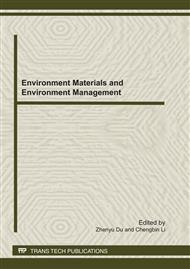p.228
p.233
p.237
p.243
p.249
p.253
p.258
p.263
p.267
The Analysis on the Incentive Mechanism of Technological Innovations in Industrial Symbiosis
Abstract:
In order to explore relationship between industrial symbiosis and technological innovation, the paper applied the Becker-Stigler principal-agent model to analyze relevant factors that affect the technological innovation in companies engaged in industrial symbiosis and established the incentive mechanism for technological innovation in industrial symbiosis. The results indicates the extra income received from the technological innovation activities, the income received after the technological innovation activities are discovered and the company has been punished and the annual income of the waste generation company are the major factors that affect the waste generation companies on their technological innovation behaviors.
Info:
Periodical:
Pages:
249-252
Citation:
Online since:
July 2011
Authors:
Price:
Сopyright:
© 2011 Trans Tech Publications Ltd. All Rights Reserved
Share:
Citation:


